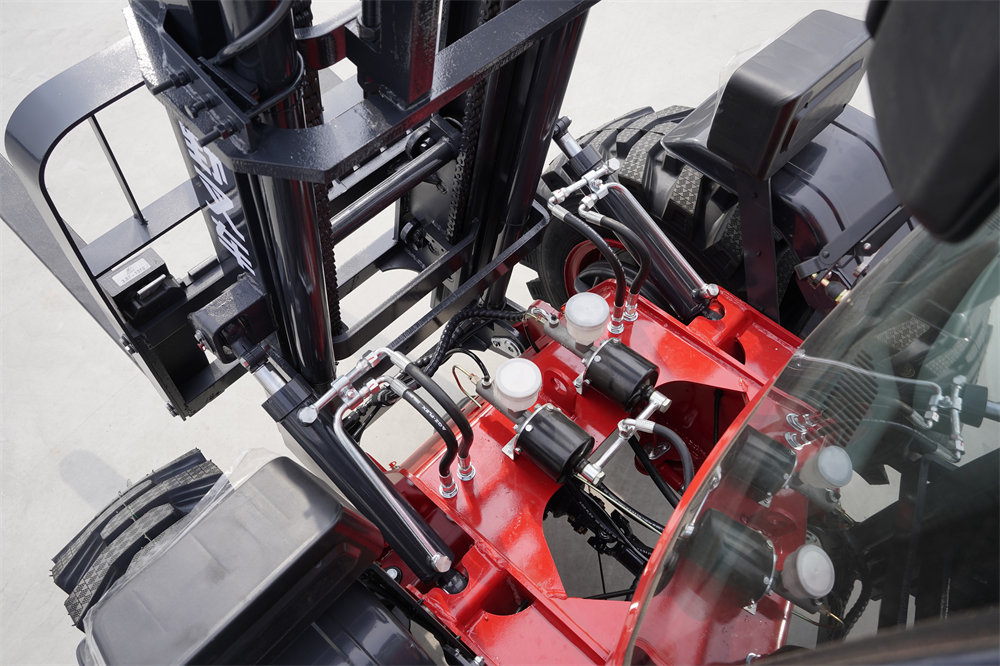The advantages of off-road forklifts in the field of waste disposal
2024-05-24
1. Construction sites: Off-road forklifts are very useful on construction sites to move construction materials, equipment and tools on uneven, rugged or soft ground to provide material handling support for construction projects.
2. Agricultural field: In the agricultural field, off-road forklifts can be used to transport and stack agricultural products, feed, agricultural chemicals and other materials. They can adapt to uneven land conditions such as fields, orchards or pastures.
3. Mines and quarries: Off-road forklifts in mines and quarries can effectively transport and stack ore, stone and other materials generated in the process of excavation and quarrying.
4. Forest and wood processing: Off-road forklifts are useful for material handling in the forest and wood processing industry. They can carry lumber, chips, planks, and other wood products over uneven terrain.
5. Oil and gas fields: Off-road forklifts can be used to move and stack pipelines, equipment and materials in oil and gas fields. These sites often have challenging terrain and environmental conditions.
6. Waste disposal and recycling: Off-road forklifts are very useful in the waste disposal and recycling industry to move and dispose of waste, recycling and reusable materials.
7. Ports and docks: Off-road forklifts can be used in port and dock environments for cargo handling, yard management and logistics operations. They can adapt to the uneven surface on the dock and various types of cargo.

In the waste treatment and recycling industry, off-road forklifts are used to collect and move waste, including garbage, paper, plastic, glass and other different types of waste. The operator uses a fork or other appropriate attachment to load the waste onto the fork or container of the forklift. Once the waste is collected, off-road forklifts can transport it to a sorting station or treatment facility. At these sites, staff can use forklifts to sort waste into different categories, such as recyclables, hazardous materials or waste that needs further treatment. Off-road forklifts can also be used for stacking and stacking waste. Depending on the nature and treatment requirements of the waste, forklifts can stack the waste in designated areas or containers for subsequent processing or transportation. Off-road forklifts play an important role in the waste treatment and recycling industry for the loading and unloading of waste and the transportation of recyclables. They can load waste onto trucks, containers or treatment equipment and unload waste from these vehicles or equipment. The waste treatment industry usually involves the use of various equipment for waste treatment and recycling, such as compressors, crushers, incinerators, etc. Off-road forklifts can be used to support the operation of these equipment, transporting waste to or from the equipment. In addition, off-road forklifts can also be used for maintenance and cleanup of waste sites, they can clean up debris, waste and garbage on the site, and transfer it to the appropriate location for disposal.

Regular inspection and maintenance of the operation of the entire forklift is very necessary, the following are some of the key components that need special attention in the off-road forklift.

1. Brake system: Brake system is an important part of forklift safety performance. Ensure that the brake system is working properly, including brakes, brake fluid, brake pedals, brake discs, etc., regularly check the brake system for wear, and ensure that the brake force and brake response are normal.
2. Tires: Off-road forklifts usually operate on uneven ground, so the condition of tires is crucial. Check tire wear, air pressure, and tire tread. Over-worn tires or tires with insufficient air pressure can affect the stability and handling of the forklift.
3. Suspension system: Suspension system is crucial for the stability of off-road forklifts on uneven surfaces. Check suspension springs, shock absorbers and connectors to ensure proper operation and structural integrity.
4. Power system: The power system of off-road forklift truck includes engine, transmission system and fuel supply. Regularly check the working status of the power system to ensure good power output and normal fuel supply.
5. Steering system: The steering system of off-road forklift truck includes steering shaft, steering gear and steering mechanism. Ensure that the steering system is flexible and accurate, and that there is no abnormal steering resistance or abnormal noise.
6. Bearings and joints: Bearings and joints bear important loads and torques in the operation of forklifts. Inspect and lubricate critical bearings and joints to ensure their proper operation and durability.

The normal operation of these key parts is very important for the safety and performance of off-road forklift trucks. Regular inspection and maintenance of these components, and timely treatment of any problems, can ensure the reliability and safety of the forklift.




